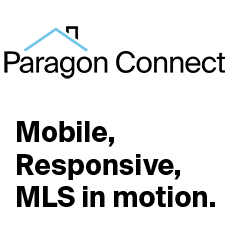 On paper, a subscription business is very easy. You have new subscribers, existing subscribers and cancelled subscribers. Easy, right? The trick is to acquire as many new subscribers as you can (without breaking the bank) and keep them for as long as possible. But the enemy of any subscription business is churn. And this is at the heart of the battle of MLS vendors today.
On paper, a subscription business is very easy. You have new subscribers, existing subscribers and cancelled subscribers. Easy, right? The trick is to acquire as many new subscribers as you can (without breaking the bank) and keep them for as long as possible. But the enemy of any subscription business is churn. And this is at the heart of the battle of MLS vendors today.
I see several trends emerging. A lot of these numbers are based on my observations and “back of the envelope” math. So feel free to tell me I’m full of shit in the comments.
1. Churn baby, churn. It looks like, in regards to churn, FBS is winning. Said another way, FBS is keeping more of their existing customers while gaining additional customers. This is very difficult and something they should be very proud of.
2. Shift happens. CoreLogic is fighting to keep it’s non-Matrix MLS system customers. Same thing is happening to Rapattoni and Solid Earth. Both are in rebuilding stages and are fighting to keep customers happy while they re-tool. FBS and LPS are attacking these opportunities and winning.
3. More shift. Due to the above reasons, when the dust settles, I think the top 3 MLS vendors (in regard to subscribers) are now, CoreLogic, LPS and FBS.
4. In-House MLS systems. Denver, Naples, and Knoxville are all converting to traditional MLS vendors. This is what you call a trend.
5. LPS lands a big one, Sandicor. This is more a threat to CoreLogic than anyone else. Big MLS providers were solely CoreLogic’s domain. But FBS and now LPS have proven they can play with the big boys.
6. Matrix is still the gorilla. And CoreLogic bundling strategy is still tough to beat. They won’t give us without a fight. But I’m already hearing grumbles about relying too much from one vendor.
So that’s the playing field from my point of view. Let’s try and keep in friendly.

The vendors must realize that their software must run elegantly on iPads and other Apple products. Those users are militant about it and are not about to put up with “work arounds”.
You missed what I think is a very important point – and the vendors are dragging their feet as much as possible over it – and that is back end databases versus front end applications (traditional or apps).
The entire landscape is going to change over the next 3-5 years. It makes no sense to have full scale systems like we have today.
Why not have all the data (either from one MLS or a multitude of MLSs) in one shared database and allow the users to choose what front end they want to access that data.
This scares the crap out of traditional vendors and MLSs but if we are going to make real change for the better this is the way to go. You can still have some form of basic MLS system, but nothing on the scale you have today.
We constantly hear about MLSs and vendors not having enough R&D resources to do anything because they don’t make enough money and are too busy patching a decades old platform.
Scrap ’em and move on. I’m ready when you are.
Reminds me of the old PRC v. Moore data days. They had the same issues running with the new web based startup vendors while dragging the legacy balls and chains.
I echo what Russ said – essentially out with the old and in with new. Legacy systems, though once Flagships of the vendor community, are now anchors. Be bold, cut the chains and free systems and data.
I know, easier said than done, but front end of choice WILL be the future. The vendor that can be nimble and seamlessly operate across platforms and devices will prevail and prosper.
Of course, we at FBS agree wholeheartedly with Russ and Chris regarding plug and play MLS. Getting there from here takes vision and patience as we build movement with MLSs around the RESO Data Dictionary and APIs, and as the software gets built to run on those standards, but, as Chris, that is the future.
All that being said, moving toward standards and new software built on those standards is a long-term process requiring great collaboration among MLS organizations and vendors. One of the biggest stumbling blocks to plug and play remains the wide variety of data formats and business rules across MLSs and creating rich APIs (and getting developers to use those APIs) will take time.
Seems to me that half the old systems are still in use because many MLS staffers aren’t getting the support they feel they need to to implement a migration.
Still a lot of opportunity out there.
Russ and Chris.
On September 18th RLS in NYC went live as a backend listings database thanks to the hard work from Stratus. We have 4 listing vendors and one large firm who created their own internal MLS system, pulling and pushing listing data our system.
The new RLS entity functions like an MLS but with no single front end application. Several member firms have already expressed interest in exploring other MLS vendors their other offices use outside of NYC.
In this environment the one thing is that new to MLS vendors is that they do not have the whole market but need to sell direct to firms (offices). Many are not ready to try that business model which is a shame because several of the offices in NY are the same size of small to medium MLS’s that they currently service.